While we were on one of our typical outdoor adventures the kids came across a pile of washed up Pumice stone. Finding a rock that can float is always an open opportunity for some floating rock science. So we collected some pieces of Pumice, along with other varying rocks, and took them home. Dimples (7) knows quite a bit about Pumice and why it floats, because we see it a lot as we explore our coast line. Miss T however, hasn’t seen it as much.
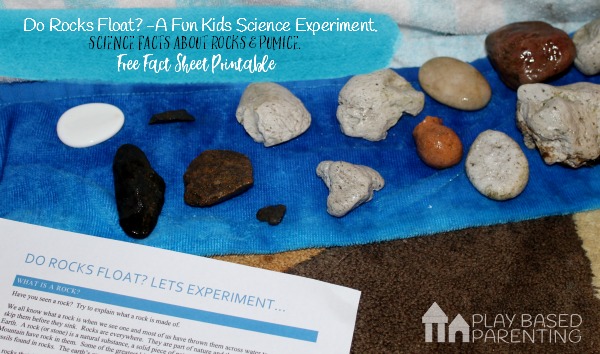
Do rocks float? The fact sheet.
My little Miss T (3) has been inquiring a lot lately about sink/float concepts and she is starting to understand solid/hollow objects and why certain things float. She was very interested in the light-weight pumice stone and was excited to do a floating rock science experiment on all the rocks we collected. She knew what the outcome of the experiment would be, but that didn’t stop us from learning more about rocks.
First Dimples and I did a bit of research on the internet so we were fully informed about rocks, what makes a rock? how is it made and what is Pumice? I typed up a fact sheet for the experiment that included all the cool things we learnt. Some of these facts weren’t new to Dimples, so he had much delight telling his little sister all about how Pumice is made and why it floats.
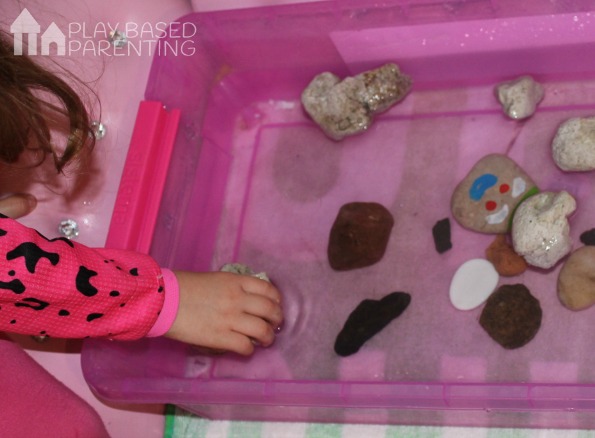
What is Pumice?
Pumice is an igneous rock that has been made from hardened foam of lava when it comes out of a volcano. The inside of a volcano has very high pressure and can be extremely hot. When lava comes out of the volcano it meets the cold air and sometimes it meets the cold sea water.
Air and water that are mixed in the lava rising out form a foam as the pressure changes and temperature falls. The huge difference in temperature gives the lava a cold shock and freezes it. So the air bubbles get trapped in the centre of the forming stone. These trapped bubbles are the reason why Pumice rocks float. In some kinds of pumice rocks the air bubbles can make up to 90% of the rocks volume. That rock is nearly all air!
The Floating Rock Science Experiment.
After we learnt a little about rocks and pumice, Miss T inspected all your rocks. I asked her questions about their texture, how they looked and felt, if they were heavy and solid, but most importantly I got her to predict if the rock would float or sink. It is pretty obvious – That doesn’t take away from the experience though. We lined them up and she plonked them into the water one by one, correctly predicting whether they would float or sink.
All you will need to do is, print off the fact sheet below.
Then collect a bunch of different shape and size rocks. Some pumice, either from the beach or you can buy a similar stone from the beauty section of most supermarkets (used for exfoliating or something). Join me to get instant access to your printable factsheet.

GET INSTANT ACCESS
Subscriber Only Content
Join the Play Based Parenting newsletter to gain instant access to this printable.
Simply click on the picture below or right HERE to download your pdf file. it will open in another browser where you can print and save. Have fun experimenting 🙂
What we learnt.
Pumice is full of captured air cavities, it feels light, almost like chalk and it can be made of mostly air. It is a rock and it does float. No other rocks float because of the water density. If you put rocks in something with a higher density than the rock, like say mercury, they might float. But in our case, all the other rocks sunk straight to the bottom. However, that wasn’t all… We did learn how rocks are formed and that there are different types. We also experimented with some of the textures of the rocks after they had been in the water to see which felt stronger and held themselves together even when wet.
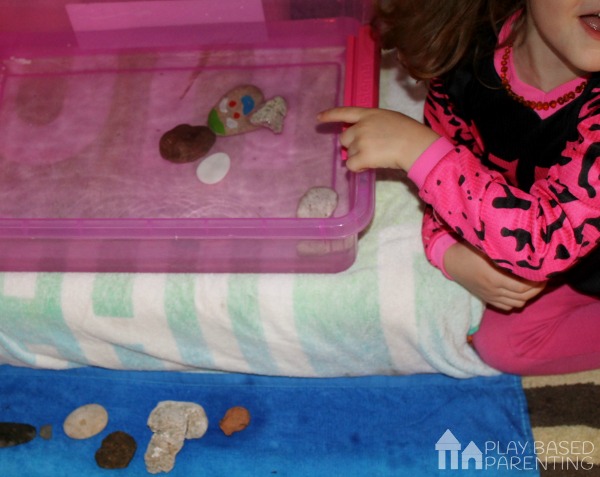
Has your child ever played with the floating rock, Pumice?

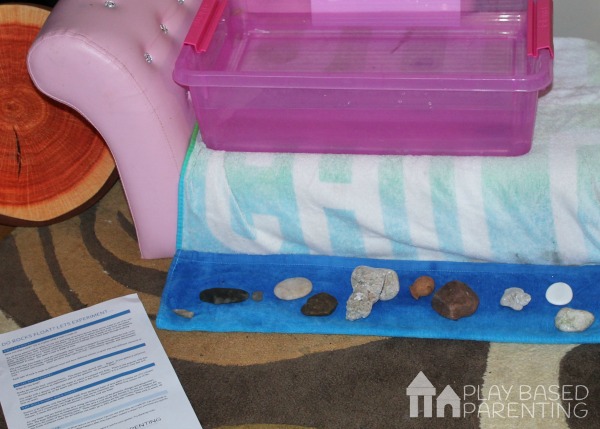
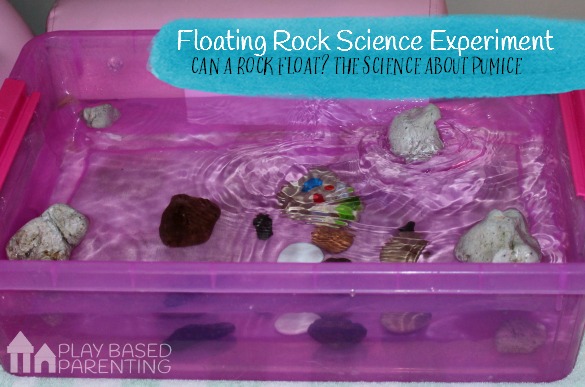

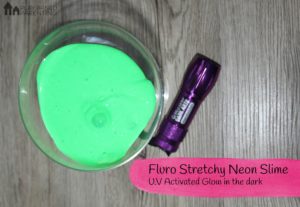



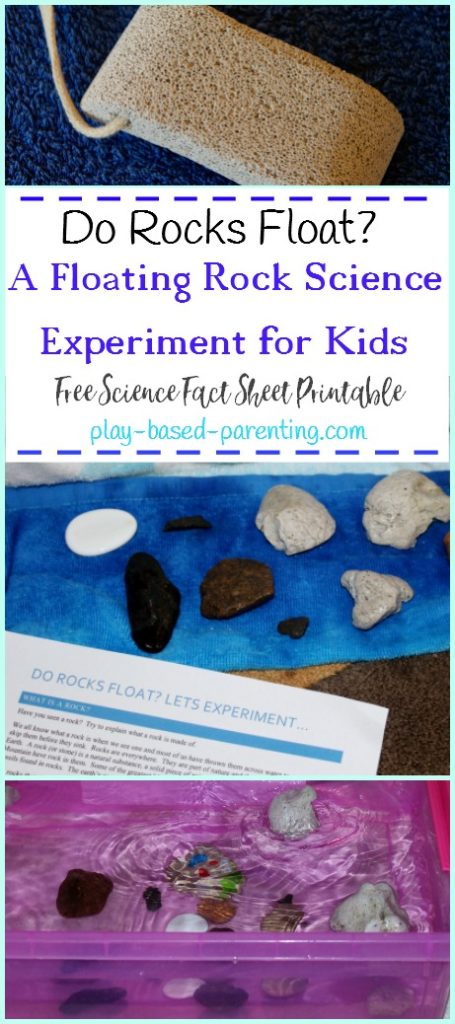
Leave a Comment